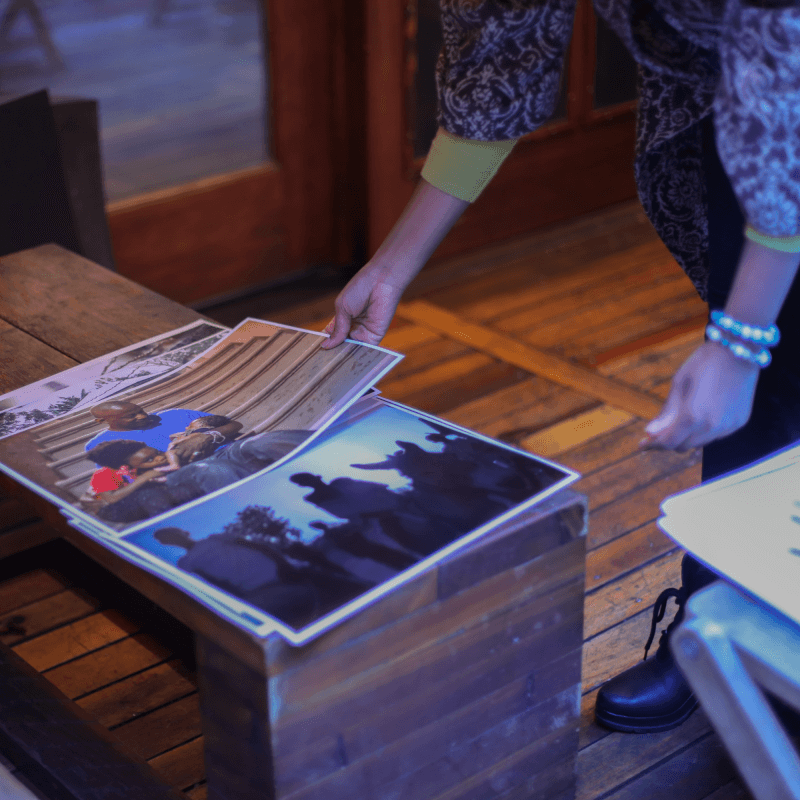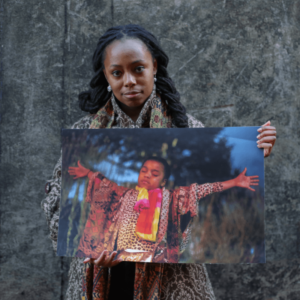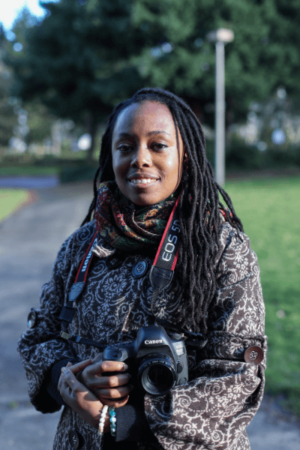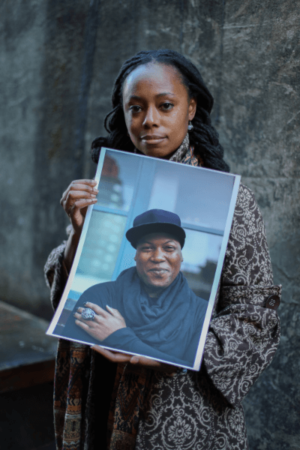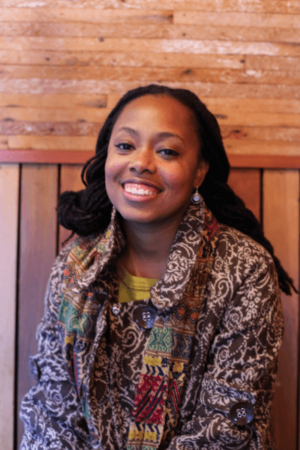“I’m very staunch about figuring out how to treat people, not well, but at the height of care.”
Intisar Abioto | Artist
In her 8 years living in Portland, Intisar Abioto has profoundly influenced how the city and the state tell culturally specific stories, especially in regards to the Black community. As a photographer, dancer, and writer hailing from Memphis, Tennessee, Abioto says the key to her work is not just making compelling art, but doing it in a way that’s healthy for the community.
“I’m very staunch about figuring out how to treat people, not well, but at the height of care,” she says. “Our community members need so much more care than we’re getting. Care has been taken out of our communities and the efforts–the investment–has been used to build other people’s skills, dreams, establishments, and communities. It can feel overwhelming the amount of care we need, the amount of work we need to do to have continually-growing-and-evolving-upwards communities that aren’t ravaged, erased, or displaced. It’s a lot.”
Growing up in an artistic family where her parents, aunts, and uncles were also involved in the Civil Rights Movement and Black history education, Abioto has long been interested in documenting the stories of Black people. Prior to coming to Portland, she and her sisters traveled around the country and the world interviewing Black people for a project titled “The People Could Fly.”
That project set the stage for Abioto’s defining work in Oregon (so far), “The Black Portlanders.” Originally a Tumblr page, “The Black Portlanders” is an ongoing photo essay featuring street portraits of Black Oregon residents. The portraits capture both Oregon natives and transplants of all ages, genders, and life experiences and celebrate the diversity of the Black diaspora in the state. Abioto has partnered with organizations like the Urban League of Portland to expand the project into rural areas of the state and has worked with galleries such as the White Box and Portland Art Museum to host exhibits featuring her work. “The Black Portlanders” has also been featured on CNN and Al Jazeera.
Despite these successes, Abioto emphasizes that there has been plenty of struggle along the way. At one point, when most of her family moved back to Memphis, she was effectively homeless and relied on the generosity of other female artists in the city for a place to stay.
“What I’m getting from all this research is that there have been Black artists who have been doing amazing things here and we don’t always know their names,” says Abioto. “We suffer when we don’t know their lives and their stories. We suffer when we don’t know what they went through to survive.”
Beyond her art, Abioto has participated in a number of grassroots and formal community building efforts, including planning and organizing for the Mercatus project. Through this work, she has helped create a more physical and digital infrastructure to support artists like herself and provide opportunities for her community to thrive in general.
“If Black people can consistently be moved around the earth and we keep creating intergenerationally brilliant beautiful flowerings, but we keep being uprooted, then I want to be able to see those patterns and innovate and create around that,” says Abioto. “I want to link arms in the art with the artists of today and the artists of the past to be a part of that continual new mood, that push for our lives.”
Storytellers
Author: Bruce Poinsette
Photos: Renee Lopez
Published: February 2019


